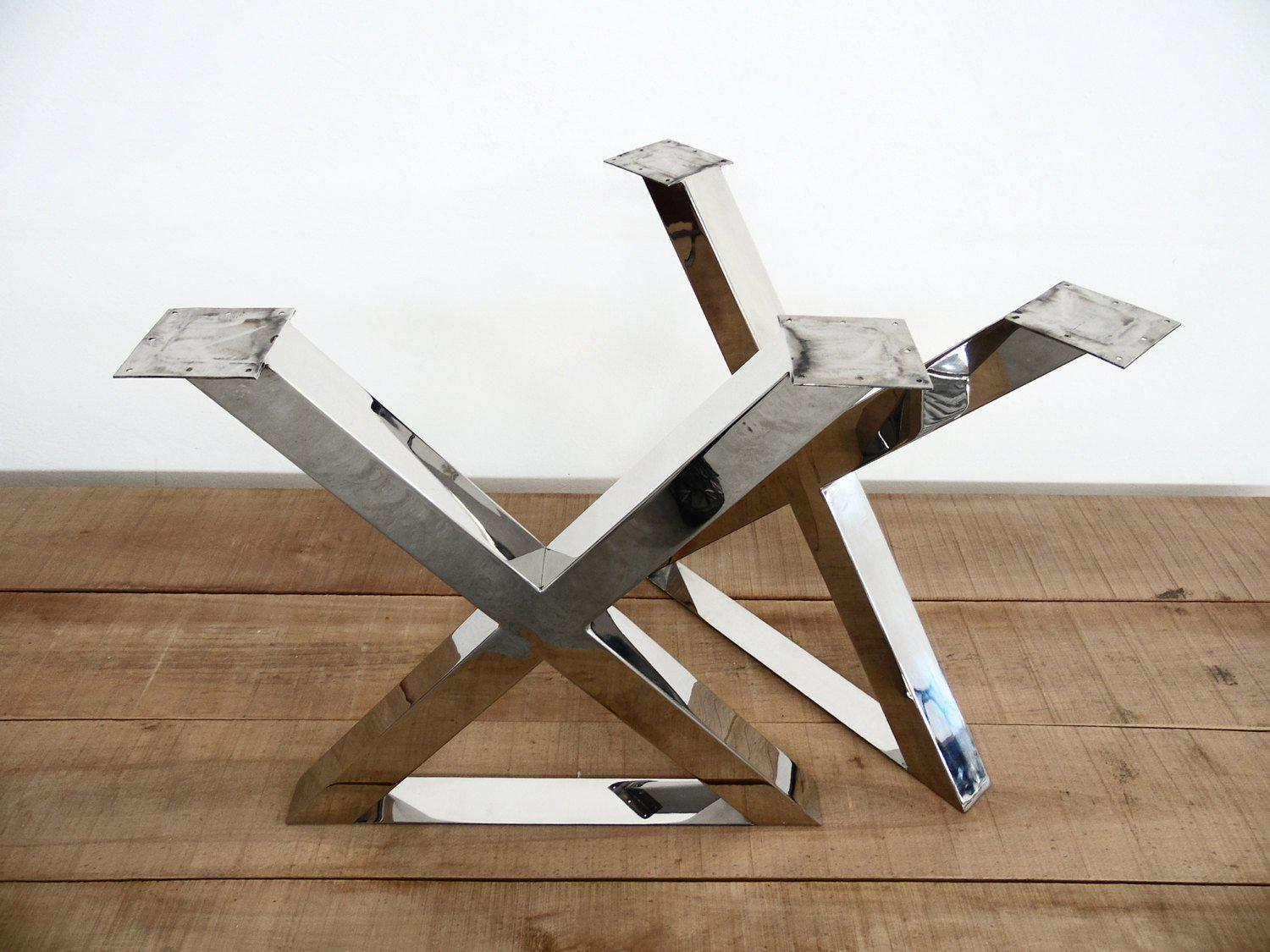The Ultimate Guide to Selecting Resilient Dining Room Table Legs
The Ultimate Guide to Selecting Resilient Dining Room Table Legs
Blog Article
A Detailed Appearance at Eating Table Leg Styles: Locating the Perfect Match
Picking the ideal table leg style is essential for both visual allure and sensible performance. Standard four legs supply classic elegance and security, while the stand base gives increased legroom and a modern look. For those with bigger tables, trestle legs guarantee durable assistance, whereas hairpin legs present a mid-century contemporary vibe with their minimalist style. The x-shaped legs mix contemporary style with improved stability. Each of these choices brings unique advantages, making the option a lot more than simply a matter of choice. Explore further to uncover which style perfectly complements your dining area and way of living.
Traditional Four Legs
Amongst the various types of eating table leg styles, the conventional four-leg design stays a classic option for numerous houses. 4 legs supply balanced assistance, ensuring the table remains secure and capable of birthing significant weight (dining room table legs).
From a visual point of view, the traditional four-leg layout can be conveniently adjusted to different interior styles. Whether crafted from wood, steel, or a mix of materials, these legs can be elaborately sculpted, sleek and minimalistic, or anything in between. Their flexibility permits them to match both rustic and contemporary settings perfectly.
Moreover, the straightforward framework of the four-leg design facilitates ease of motion and positioning within a room. Unlike more facility bases, this design minimizes obstructions, supplying enough legroom for restaurants. In summary, the standard four-leg table leg design weds sustaining style with practical functionality, making it an astute selection for those seeking both type and function in their dining furnishings.
Pedestal Base
Usually celebrated for its classy and space-efficient layout, the pedestal base is a prominent option to the typical four-leg arrangement in table leg designs. This distinctive base generally features a solitary main column sustaining the tabletop, which can differ in form, from ornately carved wood to sleek, modern-day metal. One of the main advantages of the pedestal base is its capability to optimize legroom and seating flexibility. Without edge legs, diners are afforded better flexibility of activity, making it an ideal selection for round and oblong tables that advertise even more intimate and comprehensive gatherings.
In addition, the pedestal base's central support can take care of substantial weight, enabling using heavier table tops, such as marble or thick wood. This strength combined with its visual adaptability makes the pedestal base a preferred option in both conventional and modern interior settings. It can perfectly incorporate with numerous design motifs, from traditional style to minimalist modernity. Additionally, the central column itself offers a canvas for elaborate layouts and imaginative expressions, adding an element of aesthetic passion underneath the table. In summary, the description pedestal base combines functionality with style, making it a fine-tuned and functional option for diverse dining environments.
Trestle Legs
Trestle legs offer a robust and timeless foundation for eating tables, characterized by their straight cross-bracing and sturdy support beam of lights. Originating from medieval times, this design has evolved yet maintained its necessary framework, making it a perennial favorite in both traditional and contemporary setups. The central trestle light beam, commonly sustained by two or more upright posts, supplies exceptional security, enabling larger table sizes without the demand for additional legs.
A considerable benefit of trestle leg tables is the sufficient legroom they provide. Unlike tables with 4 corner legs, the lack of blockages at the table's sides supplies unobstructed area for chairs and diners, boosting convenience and availability. This makes trestle tables optimal for suiting bigger events, whether in a dining area or a banquet hall.
The aesthetic versatility of trestle legs is significant. Available in a variety of materials such as wood, metal, and composite, they can be finished to enhance a large range of indoor designs. Visit This Link From rustic farmhouse to streamlined modern styles, trestle legs can be personalized to fit individual tastes. Their enduring charm and functional advantages make trestle legs an engaging selection for those looking for both design and practicality in their eating table.
Barrette Legs

The allure of hairpin legs exists in their simplicity and convenience - dining room table legs. Available in a variety of materials, including steel and brass, they can be completed in countless colors to complement various interior styles. Whether coupled with a rustic wood tabletop or a contemporary glass surface area, hairpin legs easily blend performance with a touch of classic beauty
Durability is another notable feature of hairpin legs. Regardless of their delicate look, these legs are crafted to bear significant weight, ensuring the table remains stable and secure. Furthermore, they are fairly simple to mount, making them a prominent choice for DIY fanatics and expert furniture makers alike.
X-Shaped Legs

Built from products such as steel, wood, or a combination of both, X-shaped legs can be customized to match numerous layout choices. Steel legs frequently offer a smooth and commercial feel, ideal for loft-style homes and contemporary eating rooms. On the other hand, wood X-shaped legs offer a warmer, a lot more rustic appeal, ideal for farmhouse or eclectic insides. The versatility in products permits home owners to personalize their eating tables to better fit their overall layout plan.
In addition, the design behind X-shaped legs guarantees also weight distribution, decreasing the danger of tottering and enhancing longevity. This makes them specifically appropriate for larger dining tables that require extra support. Fundamentally, X-shaped legs blend functional design with contemporary looks, making them a classic choice for varied dining environments.
Conclusion
An extensive understanding of eating table leg designs reveals the unique attributes and benefits of each layout. Trestle legs ensure robust support for larger tables, and hairpin legs introduce a mid-century contemporary visual.
Report this page